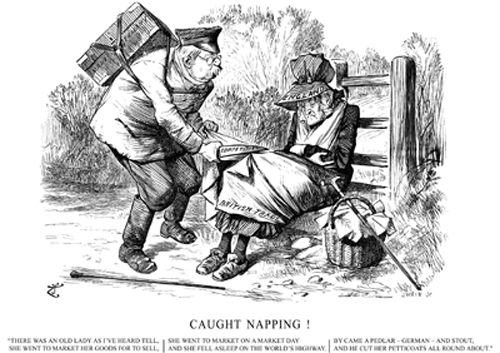


Are you sure you want to reset the form?
Your mail has been sent successfully
Are you sure you want to remove the alert?
Your session is about to expire! You will be signed out in
Do you wish to stay signed in?
The industrial depression
Study Sources A to D carefully and then answer the questions that follow.
Source A: Cartoon in Punch, 1896, entitled ‘Caught Napping’

Source: Punch, 1896
In Sources B, C and D, three modern economic historians write about the causes and nature of the depression.
Source B:
| It might be questioned whether all Britain’s losses can be attributed simply to the emergence of new industrial competitors; perhaps they stemmed from internal deficiencies. A country whose industrial structure is too narrowly based on a few traditional industries is obviously going to be more restricted as regards trading opportunities. Source: D. H. Aldcroft, The Development of British Industry and Foreign Competition, Allen & Unwin, 1968. |
Source C:
| If Britain was behind the times in technique and methods of production, she was even further behind the times in her selling methods... a frequent complaint was scarcity of British trade representatives abroad... poor packing of goods and inadequate credit facilities. Source: D. H. Aldcroft and H. W. Richardson, The British Economy 1870-1939, Macmillan, 1969. |
Source D:
| It is important to remember, however, that Britain retained a wide lead in many industrial sectors to 1914. Most of these had their roots in the industrial revolution; cotton textiles and textile machinery, heavy machine tools, locomotives, ships and steam-engines. Source: S. B. Saul, The Myth of the Great Depression 1873-1896, Macmillan, 1985 edition. |
